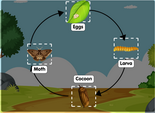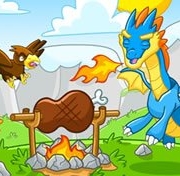Life Cycle of a Salmon, Science Game for Kids
This science game for children teaches you about the life cycle and characteristics of salmon. Salmon start their lives in shallow areas of streams or lakes. They migrate to the ocean as fish. They return to the stream or lake they were born to spawn and then die. The stream or lake is where their offspring spend their childhood, just like the parent.
There are many stages in the life cycle of salmon. They occur at different places. The life cycle begins when an adult salmon swims upstream to the ocean to reproduce. The nest is made using pebbles from the river's bottom. The female salmon builds a nest, and then lays between five and twelve hundred eggs. Only 20 of the 100 eggs that are viable fry will survive after the male fertilizes them. The eggs hatch after a brief period of incubation into small, premature fish called fry or parrs. These fish live in freshwater until the time when they are old enough to migrate to the sea. They then return to freshwater and lay their eggs once again. It all starts again. The eggs are laid by female salmon in redds on riverbeds.
Scientists are now better equipped to understand the life cycle and methods of investigating salmon. They are studying how climate change and habitat changes affect salmon migration using DNA analysis and stable radioactive isotopes. Salmon must be able to navigate the water flow and avoid predators in order to migrate. Scientists are trying to understand this amazing fish.
The parr stage is the first stage of the salmon's life cycle. These fish are able to hide from predators by having vertical bars on their bodies. Depending on the species, their growth period may last for months to years.
After reaching sexual maturity, adult salmon begin to re-acclimate to fresh water and return to their natal stream. They will travel through rugged rapids and leap over rocky waterfalls. They also need to avoid hooks, trawling, and hungry bears. They can move from saltwater into freshwater once they have reached sexual maturity to spawn.
Later, salmon smolts lose dark parr stripes as well as bright silver scales. They turn brighter at night and are silvery during the day. They move downstream to begin a new life in ocean waters. Before they reach the ocean, the smolts spend several years in freshwater streams or estuaries. They spend their entire lives eating seaweed and small organisms.
An adult salmon spends between three and seven years in the ocean, before returning to spawn. A salmon's journey to adulthood is not easy. Only 2 percent of salmon make it to adulthood. Salmon encounter many natural predators along their journey. These obstacles include pollution, habitat management problems, and rive blockages.












